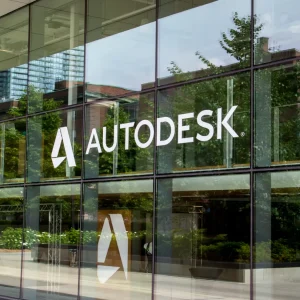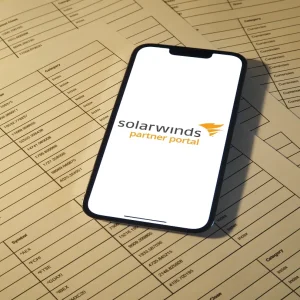
Back in 2010 the task of building a UK partner ecosystem from scratch began with Salesforce facing objections and overcoming misconceptions.
Having shaken up the software industry with its SAAS model for CRM Salesforce took the strategic decision to go down the ISV route in pursuit of becoming an end to end applications provider.
It needed developers to write applications on its Force.com platform.
The proposition to attract developers was access to the platform but the real goal real goal for Salesforce was to find firms fit enough to be business partners.
They would be given access to the Salesforce customer base.
The programme offers development partners free access and free reign to develop on the platform – as long as they don’t compete with the core CRM.
Salesforce makes its channel money through a percentage of revenue generated from apps built on Force.
Yet back in 2010 even with these incentives members of the UK software development sector were not to be easily persuaded.
The first objection was that Salesforce was attempting something new.
Secondly Salesforce was a CRM company, it didn’t have a name for running a platform on which firms could develop applications.
When initially building the channel programme Melissa Di Donato, VP of channel for EMEA and APAC at Salesforce spent a lot of time in the trenches speaking with resellers and developers.
However it was not a recruitment programme built on going out and grabbing people off the street and signing them up.
To become a business partner – as opposed to a development partner – meant being subjected to strong due diligence.
Di Donato says: "We do a business review of the company, a technical review of the application and a full on security review of the product."
"We ask: ‘What’s your idea? What’s your programme? Who are you looking to sell to? Why do you want to partner with us? What do you want to get from the programme?"’
Back at the start
Di Donato today runs a partner network of 2600 firms. She started with two.
"The first objection was this was something brand new. The second question from potential partners was: ‘You are a CRM player, what do you know about building and running a platform?’"
Being entrepreneurs, developers and businesspeople who are running their own organisations – UK developers tend to be difficult to impress.
"At the time the types of services that are needed and the types of toolkits required to run a platform were not something that people associated with Salesforce. They didn’t think we had them. But in fact we did."
"We are a platform company because all of our core products sit on top of our Force platform. When we sell Salesforce it all sits on top of that platform," she says.
"The fact was that we had built our own business on the platform. But that we’d be delivering it to partners and inviting them to build apps on it, that, at first, they didn’t get.
"But once developers realised that they could create powerful applications, they began sign up."
Another concern raised by developers was around lock in.
Once they started working on Force.com would they face being locked in to Salesforce? What would happen if there was a parting of the ways?
"Resellers and partners wanted to know how safe their IP was, their intelligence and their apps. And if it could ever be ported off the Salesforce platform and put elsewhere?" she says.
Di Donato says the acquisition of Heroku by Salesforce a privately held cloud platform for writing in the web application framework Ruby on Rails meant partners knew they would not be locked in. The question from partners to Salesforce quickly move onto: How are you going to help grow my business.
End to End
By going down the ISV route Salesforce wanted to be an end to end application provider and it knew that moving beyond its core CRM system those applications would have to be developed by a partner ecosystem.
"The benefit is that we’re giving our partners access to our hundreds of thousands of customers," says Di Donato.
Salesforce launched an app exchange. It hosts over 2,600 apps and today 300 are Salesforce1 badged and are mobile enabled.
There have been more than app 2.6m downloads from the exchange.
At first they types apps on Force.com where natural extensions of Salesforce. Five years ago 85% of apps from partners touched Salesforce CRM.
"So for example it might be an app that could take a lead qualification a little further than Salesforce CRM. Or the partner app may have filled functional gaps or areas. Or the partner may have delivered CRM specialities to certain markets," she says.
See Next Page for the next five year plan and more on numbers
Next five year plan
In 2015 the Salesforce partner world has shifted radically.
"Where we wanted to get to over time and where we have gotten to is beyond partners extending the core CRM. {Note the recently announced surprise deal with UK’s Sage.]
"We’re after standalone products. Products that can stand alone and exist in a customer base that is a non-Salesforce installed base."
Di Donato cites Kimble Applications, a UK developer for the professional services space as an example of a firm that serves markets beyond the Salesforce CRM installed base.
Salesforce founder Marc Benioff supported the ISV approach from the start. In its early stages, as well building a developer network, Salesforce also signed strategic partners such as BMC.
Evolving customer model
Today the Salesforce proposition has evolved for the partner and for the customer.
"We change every year. We’re going out and meeting our customers right now and asking – what do you want from us? The questions we ask are if you where to have another cloud service next to Salesforce, what would you buy? What’s your business need? "
"And then we build models around it. It is customer driven based upon understanding their changing needs."
Channel Inflection point
In terms of channel building Di Donato says she reached her inflection point around 14 months ago.
She realised that she’d built an EMEA channel and that the next stage was to drive value into it and from it (she is also looking to replicate her success in APAC – these efforts began around the same time that EMEA had reached critical mass.)
Salesforce partner recruitment in the UK and EMEA developed markets has slowed and is much more focused on value and verticals.
"We still have lots of growing to do. APAC started less than 18 months ago. We want to replicate the success we had in Europe out in APAC."
"14 months ago was a very clear tipping point. I woke up one day and thought: "I’ve got really good partners, smart people and great customers."
"Now in EMEA we’re looking to bigger partners. We’re looking to ‘verticalise.’ We’re looking at the problems that customers need solving and we’re creating maps for our ISV community to solve them."
Having achieved the right number of companies and developers building on the Force.com platform the need now is to have the programmes to drive the next stage of growth.
"We’re created a crucial mass of partners. It is time concentrate on how best we can ensure they drive value for themselves, for the customer and for Salesforce.
The support partners receive depends on various factors. Where they are? What markets do they target? How much they sell? How successful they are.
Salesforce doesn’t break out direct versus indirect revenue figures.
Di Donato’s success metric is business growth but not on a direct versus indirect comparison.
Does she have a number to hit?
"Of course," she says, "there is always a number."






